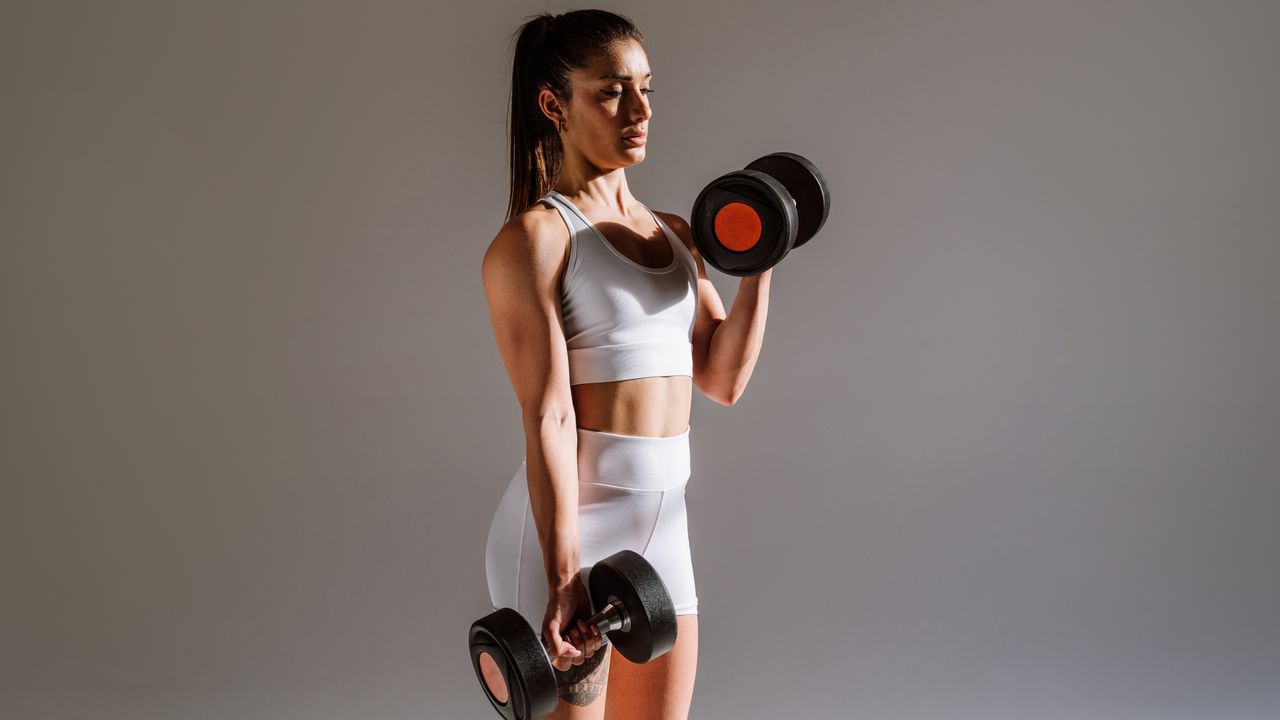
There’s nothing wrong with the classic core exercises we all know. Sit-ups, planks and crunches have their place. But they’re not for everyone. Maybe they put too much strain on your neck or back, or maybe you simply find them repetitive and dull. If that sounds familiar, we’ve got an alternative: seven standing ab exercises that challenge your core without the floor work.
Standing up for your ab workout doesn’t mean taking it easy. When you train on your feet, your core has to work hard to stabilize your body and maintain balance. That means you’re not just strengthening your abs but also engaging deeper stabilizing muscles that improve posture and support how your core helps you with everyday tasks.
As mentioned, there are seven exercises in total, but the trainer behind the routine, Britany Williams, says you only need to pick four or five. You will do 10 reps of each move and repeat the circuit three times. To increase the intensity, you’ll need a few pieces of small equipment, including a pair of dumbbells, one of the best kettlebells and a long resistance band.
What is the workout?
Williams, who is one of the trainers behind the popular workout app SWEAT, has filmed video demonstrations for every exercise. So whether you’re working out at home or in the gym, you can bring her along in your pocket. When you’re ready, you can either watch each move first and then give it a go, or prop your phone up and follow along with her in real time. Scroll down to check out the full routine.
These are the seven exercises you have to choose from:
- Dumbbell squat with cross crunch
- Dumbbell car driver
- Dumbbell overhead lunge
- Kettlebell around the world
- Dumbbell overhead knee to elbow
- Dumbbell halo
- Resistance band split squat Pallof press and rotation
What are the benefits?
This routine isn’t just about sculpting your abs. It challenges your entire core in a way that feels more dynamic than lying on a mat doing endless crunches. Moves like the dumbbell squat with cross crunch and overhead knee-to-elbow combine strength and balance, so your core has to work hard to keep everything controlled. Lifting weight overhead, as you do in the overhead lunge, also wakes up your stabilizing muscles and teaches your body to stay strong and steady as you move.
Rotational and anti-rotational exercises like the kettlebell around-the-world, dumbbell halo and the resistance band split squat Pallof press and rotation really put your core to the test. They make your midsection work to resist wobbling and twisting too much, which builds deep strength you can actually use day to day. You don’t need to be advanced to benefit either. These moves can be slowed down, lightened up, or made more challenging depending on your level.

It’s worth remembering that visible muscle definition doesn’t come from exercise alone. Core strength is built through consistent training, but things like overall body composition, nutrition, sleep and stress all play a part in how your abs look and feel. You can have a strong, powerful core without a six-pack, so don’t be discouraged if change takes time.
And finally, one underrated benefit of training your core muscles is the positive impact this can have on posture. A strong core helps support your spine, keeping your body aligned and balanced whether you’re sitting, standing or moving. Doing a standing routine in particular trains your core to stabilize your body while in motion, which translates to better posture throughout your day and can make everyday tasks and exercise feel more controlled and even easier.
Follow Tom's Guide on Google News, or add us as a preferred source, to get our up-to-date news, analysis, and reviews in your feeds. Make sure to click the Follow button!







